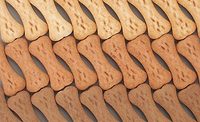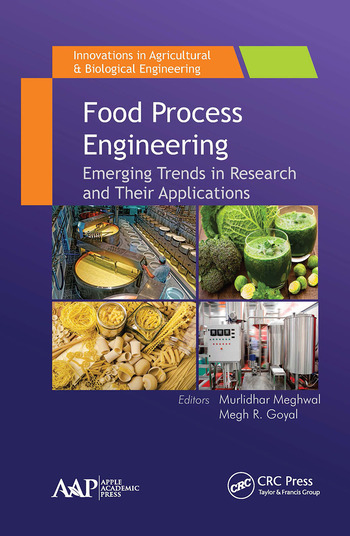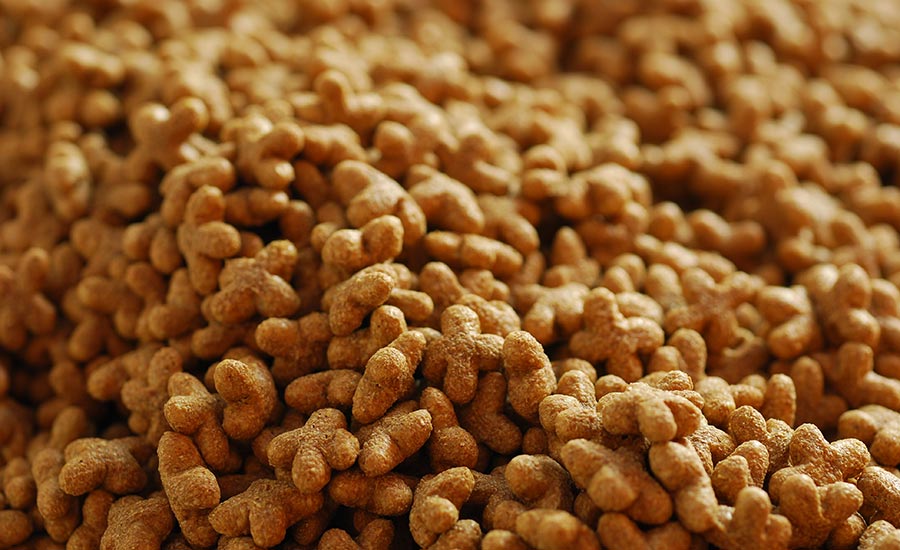Pet Food
Consumer demand drives rapid growth in pet food market
Pet food processing and packaging industry continues to grow
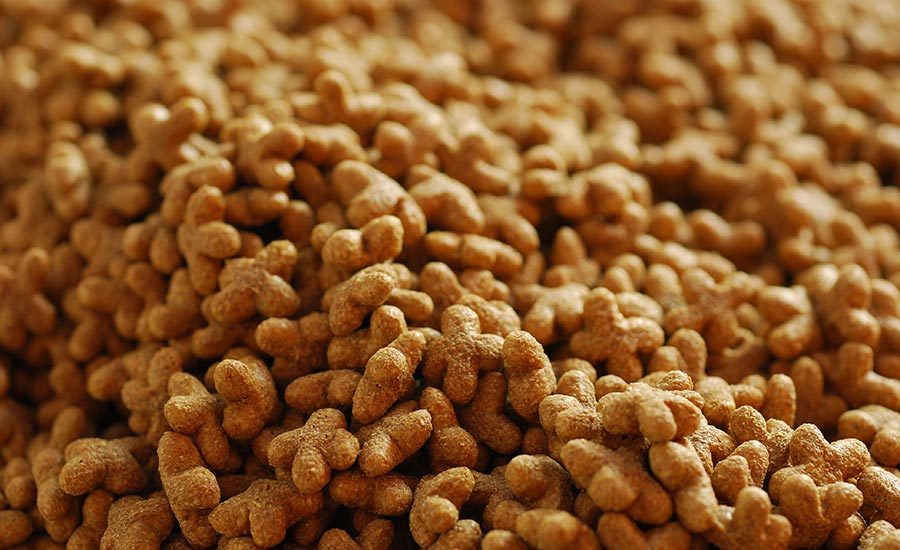
Like human food production, the extrusion process used to make most pet food and treats follows GMPs and uses preventive controls.
Photo courtesy of Bühler Aeroglide

Located at the output of extruders, this machine cuts the product after it has gone through the die. Once cut, granulators also ensure the conveyance of the product to downstream equipment on the extrusion line.
Photos courtesy of Clextral

The extruder is imperative in the cooking of kibble and treats. Single-screw extruders are commonly used in kibble production, while twin-screw extruders are more common for cooking of treats and snacks where co-extrusion is popular.
Photo courtesy of Bühler Aeroglide
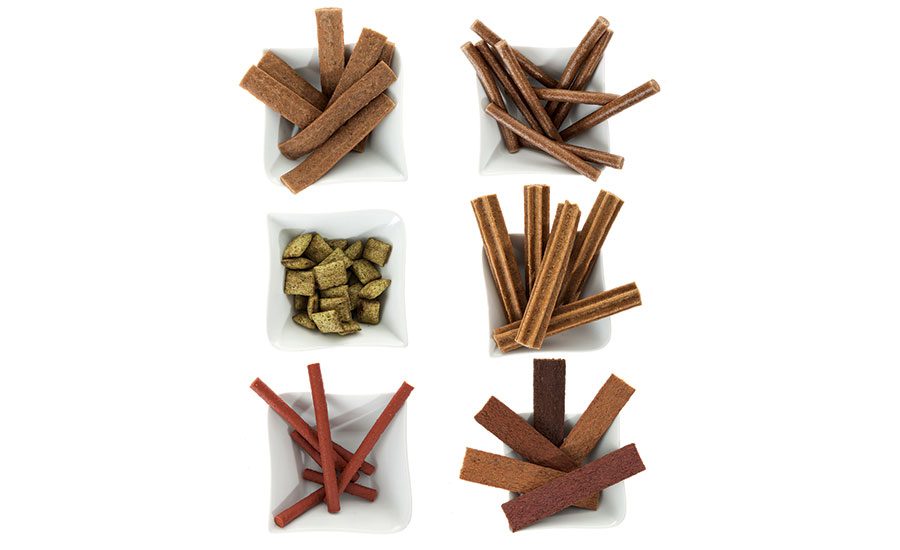
Kibble, treats and snacks are made of ingredients that are trending toward more natural products and real meats as younger consumers and empty nesters treat their pets like furry children.
Photo courtesy of Clextral




According to the 2017-2018 American Pet Products Association’s National Pet Owners Survey, there are more than 94 million dogs and nearly 90 million cats in U.S. homes.
The total amount of money spent on pets in 2018 was estimated at $72.13 billion, up from $69.51 billion in 2017. And more than $29 billion of that was spent on pet food in 2017. Cat and dog owners spent an average of $235 annually on food and additional money on food treats ($72 for dog treats, $56 for cat treats). According to APPA data, these numbers have been increasing steadily for the past few decades, and all signs point to them continuing to grow.
Article Index:
Given these numbers, it should be no surprise that pet food, the equipment that is used to process it, and its packaging are huge business sectors within the food engineering industry. As pet ownership increases, companies involved with pet food processing and packaging can reap the benefits if they keep an eye on the pets’ owners and the trends that are driving the pet food industry.
For instance, Pet Food Processing Equipment Market, Global Trends and Forecast, 2016-2022, a market research report commissioned by Food Processing Suppliers Association, lists several key factors driving the demand for pet food. These include:
- Urbanization. Rapid urbanization is particularly driving demand in growing economies, such as China, Brazil, Argentina and India.
- Pet adoption. Pet ownership in the U.S. alone has almost tripled since 1970. Emerging economies including Brazil, Argentina, India and the Philippines are also seeing increased pet adoption. For example, India’s pet population grew from 7 million in 2006 to 10 million in 2011.
- Consumer disposable income. Disposable income in many areas is also increasing, which is fueling the demand for higher-quality, functional ingredients and pet food.
- Consumer awareness of pet health. In developed nations especially, consumers are becoming much more aware of pet health, such as weight, allergies and dietary tolerances.
- Pet humanization and the desire for pet food innovation. All of the preceding factors are also driving an increased desire for pet food innovation. Many people today consider pets to be a part of their family, and they’re looking for the same qualities in pet food as they are in food for themselves. These include variety as well as foods and treats that are natural, healthy and can make “free-from” claims.
According to Dave Carney, Bühler Aeroglide area sales manager for North America, pet food ingredients are trending toward more natural products and real meats, and packaging is being driven to make pet food look more like human food as younger consumers and empty nesters treat their pets like furry children.
Alain Brisset, EPT business development manager and feed extrusion expert at France-based Clextral, agrees.
“The trends for premium pet foods have followed human food trends, including reliable origins, quality and sustainability of ingredients,” he says. “Pet food recipes have to be simple and natural, with high animal protein and/or vegetable protein content. Fibrated vegetable protein, exotic animal proteins and insects are considered today as valuable alternative sources. These options are meeting the growing demand for products with lower environmental impact, higher sustainability and reduced costs in the diet of the entire family—including the pet members.”
Pet food follows broader human food trends because it must appeal to pet owners who buy it, and these consumers are now expecting the same high standards for their pet’s food as their own: convenience, quality, authenticity and transparency. In addition, trust, value and ethics affect their decisions, depending on each buyer’s personal beliefs.
Every player involved in the pet food industry is concerned with safety, quality of ingredients, sustainable manufacturing processes and distribution of the finished products that will keep pets healthy and happy, Brisset says.
And the humanization of pets has expanded into the humanization of their food. According to Brisset, processors are making pet foods that resemble human food, influenced by “free-from” claims, with clean labels and homemade appearance.
“Even product names are evolving. You can now buy muffins, crisps, popcorn, beer and wine for your dog and cat,” he says.
The expansive flavor and texture varieties of single-serve wet cat food also reflect the trends of humanization and premiumization. So do treats: They are recognized as pet food, not intended to be a source of complete and balanced nutrition, but rather used as an occasional reward or indulgence for pets. To satisfy pet parents, brands are developing beneficial treats that allow pets to indulge while keeping within the guidelines of their veterinary-recommended diets, Brisset explains.
CGMPs and Innovative Processing
Back in July 2016, the FDA’s Food Safety Modernization Act enacted requirements that all pet food and treat makers must meet, depending on company size. These include:
- Pet food makers must implement Current Good Manufacturing Practices that include requirements for employees, facility design, equipment upkeep and maintenance.
- Pet food makers must identify and evaluate hazards associated with the foods they make and must implement preventive controls that address those hazards.
- Pet food makers must develop and implement a food safety plan detailing the steps they are taking to ensure product safety, from sourcing ingredients to carrying out a product recall.
- Pet food makers must also comply with FSMA requirements regarding foreign suppliers and sanitary transportation for finished pet food/treats and ingredients.
Larger animal food facilities were required to comply with the preventive controls requirements by Sept. 18, 2017, and small business facilities were required to implement the CGMPs by that date. The latest compliance date came in September 2018, when small businesses had to meet the preventive controls requirements and very small businesses had to have implemented the CGMPs.
To help pet food makers meet these requirements, Bühler’s Carney says, “We provide pet food processors with quality equipment featuring designs where food safety is a prime consideration. These designs were taken directly from our hygienically designed food dryers and incorporated into our new pet food dryer.” He goes on to say that Bühler’s controls and sensor selections allow its customers to run the equipment to the desired levels where the products are safe for consumers and meet pet food processing regulations.
Although there are several methods to process pet food, both Brisset and Carney agree that extrusion is the preferred method.
Clextral’s Brisset says, “Extrusion has long been utilized in pet food production, and today it is a relevant technology to help pet food manufacturers supply products to fulfill new trends, including health, nutrition, transparency, convenience and snacking.” Advances in extrusion technology and process expertise have opened the door to the next generation of innovative pet foods and treats.
“Utilizing extrusion technology and particularly twin-screw extruders,” Brisset continues, “it is possible to consistently produce high-quality and premium dog and cat food as well as treat products using sophisticated recipes—high protein, low carb, grain-free, fresh meat. Inside the twin screw extruder barrel, dry ingredients are mixed with liquids and steam, and all production parameters are precisely controlled: the degree of cooking of the dry mix, the shear applied to the processed mass, the temperatures along the barrel assembly. By controlling all process parameters, pet food processors can meet the strictest requirements in terms of texture, shapes and expansion for the final product.”
Clextral twin-screw extrusion systems can integrate a range of ingredients into pet food formulations: wheat and corn flour or grits, soy meal, meat and fish flour, animal and vegetable fat, and minerals, amino acids and vitamins. They can also include additives such as texturing agents, flavor enhancers and preservatives.
Bühler’s Carney adds, “Extrusion is generally what everyone talks about. The extruder is imperative in the cooking of kibble and treats. Single-screw extruders are commonly used in kibble production, while twin-screw extruders are more common for cooking of treats and snacks where co-extrusion is popular. However, when it comes to maximizing production and profit, proper drying with sensor controls to ensure accurate moisture and temperature is equally important. In the end, it comes down to making the most out of every step in the process.”
According to Brisset, comparing technology is an important exercise for most decision-makers who want to invest in extrusion technology. See his list on the previous page for the benefits that a twin-screw extruder might provide.
Carney says Bühler Aeroglide has been involved in the pet food industry for more than 50 years. “We began supplying pet food dryers back in the 1960s. Now as part of the Bühler Group, we provide a complete solution, from incoming conveying to storage, separation, mixing, milling, extrusion, coating and conveying to packing.”
For the manufacture of dry food, Bühler provides incoming conveying to storage tanks, separation of impurities, and dosing equipment to feed mixers. “We have Hammermills to grind grains as well as preconditioners and extruders,” Carney explains. The kibble is then dried and cooled prior to coating and conveying to packing, which is generally done in bags in sizes 10 lbs. to 50 lbs.
For pet snacks and treats, Bühler again provides incoming conveying to storage tanks, separation of impurities, dosing equipment to feed mixers, hammermills to grind grains and preconditioners and extruders. He says that the snacks are sometimes dried and always cooled prior to coating and convey to packing. Packing is generally done in small bags in sizes up to 10 lbs.
Premium Packaging
According to Stratistics MRC’s Pet Food Packaging—Global Market Outlook (2017-2026) report, the global pet food packaging market accounted for $8.31 billion in 2017 and is expected to grow at a CAGR of 7.5 percent to reach $15.98 billion by 2026. The increasing adoption of pets and the growing trends for premium and innovative pet food products are the factors boosting the market growth. The stringent pet food quality regulations are the possible restraining features. The report also reveals that the increasing trend of pet humanization provides ample opportunities in the market.
Pet food packaging uses various types of containers to protect the food from contamination factors and preserve the nutritional value.
Plastic is one of the most widely used materials for packaging across various end-use industries, the report says. Plastic in the form of PVC, HDPE, PET and others are used extensively in the pet food packaging market. The material offers high-barrier, cost-efficient, temperature-resistant and durable packaging options. Imaginative packaging expressions, such as single-serve flip open and zipper flaps, add to customer appeal in the pet food packaging market, according to the report.
North America is set to dominate the global pet food packaging market in the coming years. Widespread demand for pet ownership and pet food packaging manufacturers’ presence are factors contributing to the growth of the market. Moreover, demand for tubs and cups is projected to benefit from the need for convenience features and light weight in pet food packaging. The United States is observed to hold the largest share of the pet care market in the world, owing to the growing pet population and an increasing inclination by Americans to own dogs, cats, reptiles, small mammals and fish. Due to the continuing trend of pet humanization and willingness of American consumers to opt for premium pet food brands, the pet food market has proved resilient, allowing for continued growth in the sector. Further, the increase in the number of non-traditional households with no children, coupled with high levels of disposable income in the region, is boosting the per-capita pet expenditure for this market.
When asked about packaging, Bühler’s Carney says that pet food is packaged in a clean space in the same building as it is processed.
“There is great care to prevent cross-contamination of raw ingredients and finished product,” he says. “The smaller dog population is growing due to changing lifestyles; therefore there are smaller size bags than before. Wet food in tubs and small cans is more prevalent now for cats.”
Exploring an expanding market
Carney says that Bühler and Bühler Aeroglide continue to develop equipment that meets the evolving food safety and cleanliness guidelines their customers demand them to meet.
“We have a burgeoning business in data analytics, where we partner with our customers in a digital relationship that allows them to leverage our extensive process knowledge to improve their pet food production process and subsequently, their bottom line profits,” he says.
Additionally, thought leading experts regularly contribute to industry conferences and events, presenting new research and sharing innovations in pet food processing.
“For instance,” Carney says, “growing high-meat trends are driving research and innovation as consumers seek nutritional pet food with higher levels of protein. Last year at Petfood Forum, Bühler introduced what can be accomplished with existing solutions, with regard to fresh meat and freshly prepared meat, and the latest findings identify moisture set points. The primary challenge in extrusion is managing high moisture content in meat containing up to 75 percent water.”
Related Articles
He also says that Bühler’s work involves assessments of existing lines and considers accessories needed for meat handling and additions. This year, Bühler Aeroglide will serve on a panel discussing the future of pet food and its consumers, emphasizing IoT and leveraging people, process and platforms to maximize production.
Bühler Aeroglide also contributes to student programs in the industry, such as Petfood Forum’s Student Program, a venue to engage students in the pet food-related academic programs as the next set of professionals for the industry. This includes reviewing abstracts for pet food-related research considered for publication and presentation. And regarding food safety, Bühler Aeroglide is defining not only what hygienic equipment standards look like, but what the entire food industry will look like in the next five to 10 years.
“Bühler is working closely with industry organizations to create key standards. These include: 3-A Sanitary Standards; American National Standards Institute (ANSI) to provide informative guidance on how to use the risk assessment process for hygienic zoning and design; and the Packaging Machinery Manufacturers Institute’s (PMMI) Alliance for Innovation & Operational Excellence,” Carney concludes.
Choosing Extrusion Equipment: A Checklist >>
For more information:
APPA, www.americanpetproducts.org
Food Processing Suppliers Association, www.fpsa.org
Bühler and Bühler Aeroglide, www.bühlergroup.com
Clextral, www.clextral.com
Stratistics Market Research Consulting, www.strategymrc.com
Looking for a reprint of this article?
From high-res PDFs to custom plaques, order your copy today!





